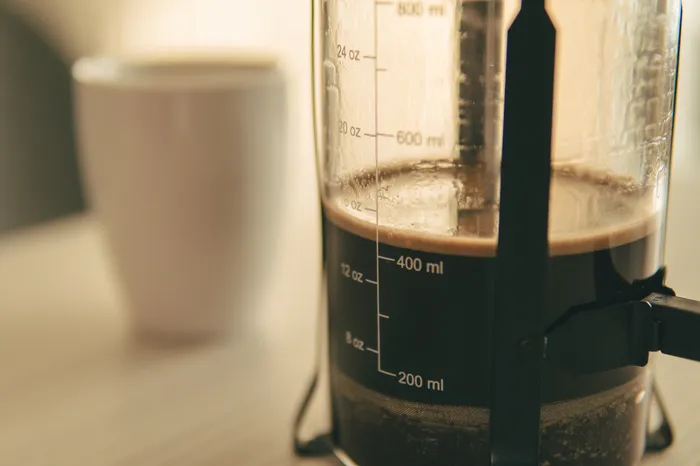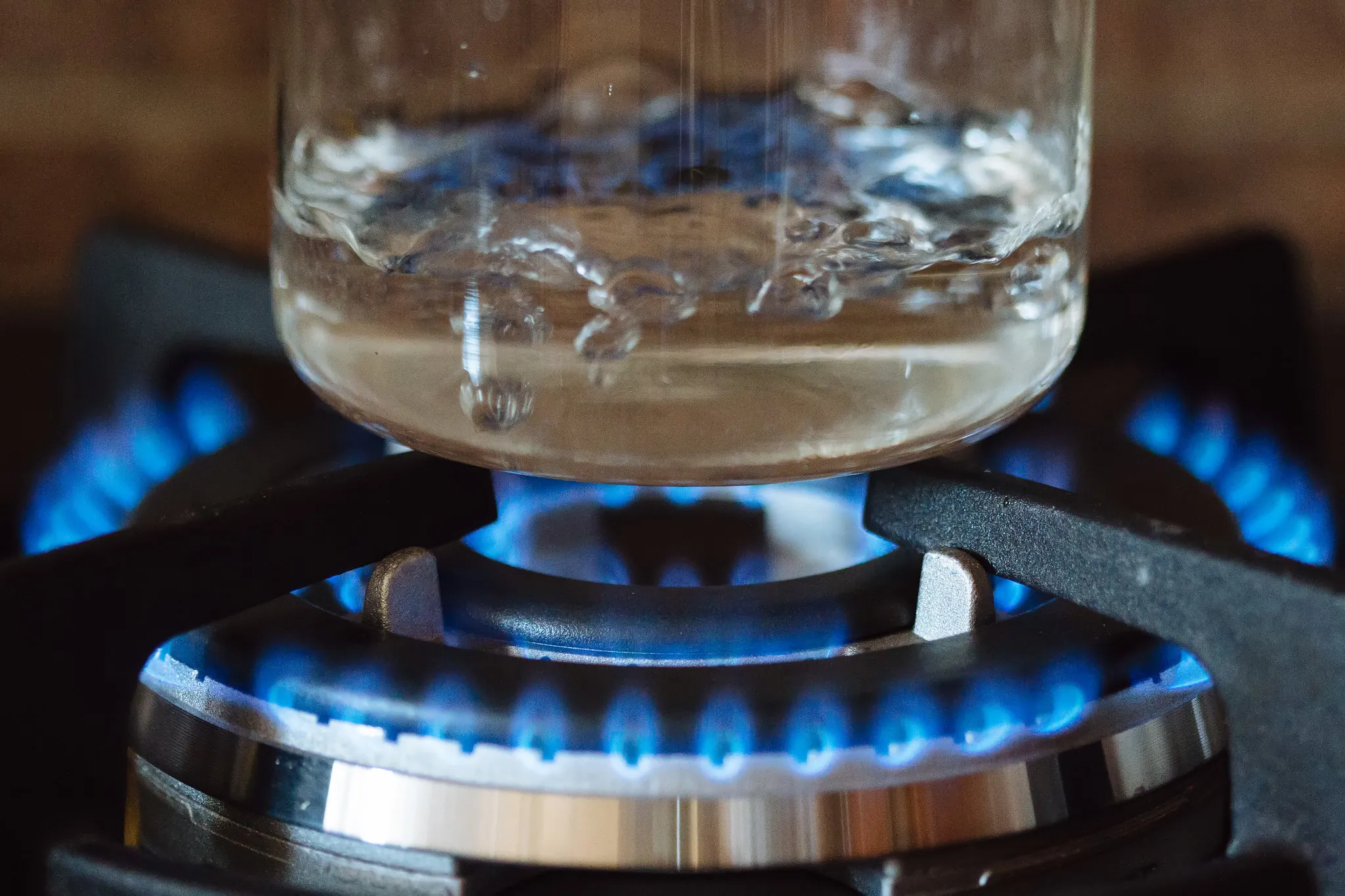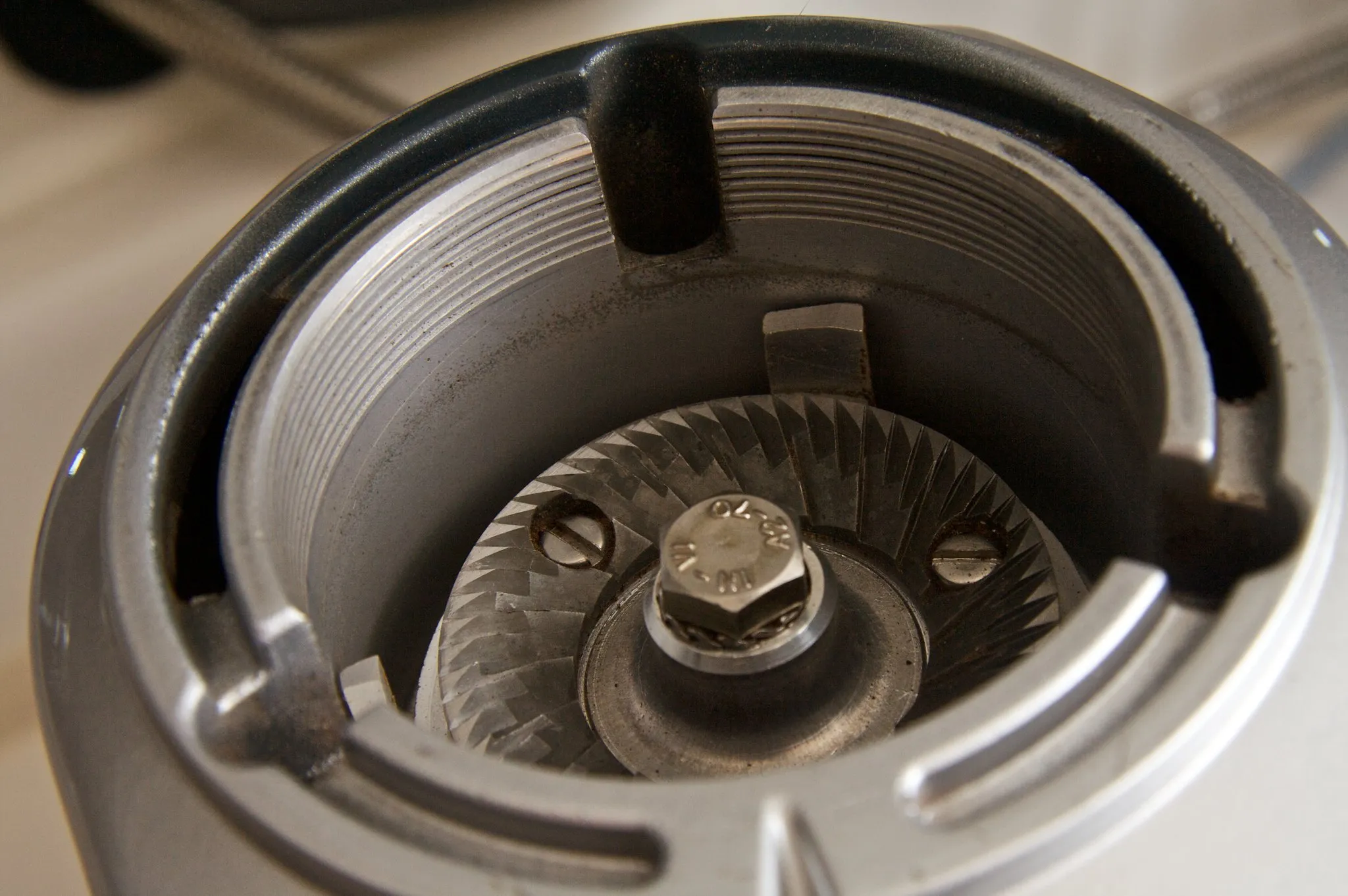The Science of French Press Brewing: A Coffee Nerd Explains How French Press Coffee Works

For years, French press has been my preferred method for brewing coffee. While many trendy coffee shops focus their efforts on pour-over and espresso beverages, I’ve always enthusiastically pushed people to try brewing in a French press. In my experience, it can produce a cup with far more nuance and complexity than people assume, but you have to know the science behind French press brewing to get that in your cup.
The multiple variables involved, from water temperature to grind size, significantly affect the flavor and extraction. Mastering the science behind French press brewing allows you to create a balanced, flavorful cup of coffee consistently.
In this article, I’ll explain how French press brewing works on a detailed and scientific level—for all the other coffee nerds out there. I’ll break down how specific factors like water temperature, brew time, and grind size influence the extraction and final flavor. Armed with that knowledge, you should be able to brew better French press coffee using science.
The Basics of French Press Brewing
Before diving into the science, let’s quickly review the fundamental process of using a French press. A French press is an incredibly simple manual coffee device made up of a large beaker-shaped carafe paired with a plunger mechanism fitted with a mesh filter screen.
To brew coffee, you first add your coarse ground coffee directly into the empty carafe. After adding the desired amount of grounds, you then pour your hot water over the grounds. You stir at around the one minute mark.
Once the time hits 4 minutes, you then slowly push the plunger straight down. This forces all of the soaked grounds to the bottom of the carafe while the fine mesh filter lets the liquid coffee sit above it in the carafe. What’s left is delicious semi-filtered coffee ready to pour and enjoy.
It’s a very basic and intuitive brewing process compared to some other coffee devices. However, there are some complex scientific dynamics at play under the surface that determine the final flavor in your cup. Now that you understand exactly how to use a French press on a functional level, let’s get into the detailed science behind it.
The Down-and-Dirty Science Behind French Press Brewing
Before getting into factors specific to French press brewing, it helps to understand some core concepts that pertain to coffee brewing in general. There are three primary variables that have an immense impact on extraction and the final flavor when brewing any type of coffee:
- Water temperature during brewing
- Total brew time
- The grind size of the coffee grounds
The beauty of using a manual French press is that you have control over every single one of these variables by hand. If you really understand on a detailed scientific level how each one influences extraction and flavor, you can perfectly dial them in and make incredible French press coffee.
So now, let’s break down the science behind properly managing each of these core variables to create flawlessly balanced and tasty French press coffee.
How Does Water Temperature Affect French Press Coffee?
Arguably the most important factor in any coffee brewing is the temperature of the water used. The many aromatic and flavor compounds that make up a coffee’s signature profile do not all extract equally based on water temperature alone.
The various acids, sugars, and other solubles that provide flavor notes ranging from bright fruitiness to rich sweetness and even roasted bitterness all require slightly different temperature conditions to extract fully from the soaked grounds in an ideal way and ratio.
For example, acids like citric, acetic, and phosphoric acid that contribute to a coffee’s bright, fruity notes tend to extract quickest in cooler water temperatures between 190-205 degrees (F). The chlorogenic acids tied to a coffee’s more vegetal and herbal qualities also extract better at cooler brewing temps.

Meanwhile, the sucrose and glucose sugars that provide sweetness and caramelized flavors extract optimally in hotter water from 205-220 degrees (F). Even hotter temperatures above 220 degrees (F) tend to pull out the more bitter and astringent compounds tied to dry, ashy, and charred flavors.
In order to extract a wide balance of sweetness, fruitiness, and gently roasted flavors, starting your French press brewing water at a temperature right around 195-205°F gives you the best of both worlds. This gives you enough heat to extract some sugars but not so much that excessive bitterness takes over the cup.
Additionally, there are a couple useful tips for maintaining your target water temp when actually brewing with a French press:
- Pre-heat your French press first before brewing. Pour hot water from your kettle (or just hot water from your tap) into the empty press and allow it to warm up the glass or metal walls and mesh filter. This prevents the cold press from dropping your brewing water temperature drastically right as you start steeping.
- Opt for a glass French press if possible or a double-walled stainless steel French press. Glass loses significantly less heat energy than metal as you brew. Stainless steel pulls more heat out of the coffee slurry, gradually dropping the temp in your press over the 4+ minutes of brewing. Glass retains heat better for more even extraction, but a vacuum-sealed, double-wall stainless steel French press should produce similar results, provided you pre-heat it.
Closely monitoring your brewing water temperature and keeping it in the ideal 195-205 degrees (F) range as much as possible is absolutely crucial for coaxing out the full spectrum of flavors from subtle fruitiness to rich sweetness. Follow these tips for the best heat retention results.
How Does Brew Time Affect French Press Coffee?
In addition to water temperature, brew time also has a massive impact on coffee flavor. When the hot water first comes into contact with the coffee grounds, extraction begins immediately. However, the various solubles that make up a coffee’s flavor profile do not extract at equal rates.
As mentioned earlier, the fruity acids tied to a coffee’s brighter notes extract quickest, often within the first minute of brewing. The sweeter sucrose and glucose sugars take a bit longer to fully dissolve out of the soaked grounds, reaching their peak extraction between around 2 to 3 minutes. Finally, the most bitter and roasty elements require prolonged exposure to hot water to extract, sometimes taking upwards of 4 minutes to pull out fully.
This is why the standard recommended brew time for a French press is right around 4 full minutes. This gives enough time for thorough extraction of the fruity acids, good amounts of sweeter sugars before they go too far, and only gentle levels of slight roasted bitterness to balance everything out.
However, the exact ideal time can shift slightly depending on factors like your coffee’s freshness and grind size. Very freshly roasted coffee tends to degas more CO2 when brewed. This can cause grounds to float more on top of the water instead of sinking and fully saturating. The CO2 can also surround grounds and insulate them from the hot water…not what you want when you’re trying to expose your coffee to the hot temperatures for four minutes.
To prevent extraction issues caused by degassing, you need to stir after the gas is released. Gently stirring around the 1 minute mark of brewing can degas the “bloom” and get the grounds fully soaking evenly. You may also need to extend time to 5 or even 6 minutes for freshly roasted beans to allow complete extraction after stirring and releasing high amounts of CO2.

On the other hand, if you grind your coffee finer, you increase surface area and speed extraction. In this case you likely only need 3 minutes of steeping to prevent overextraction before plunging the press.
Dialing in that sweet spot of brewing time for your specific coffee and grind takes some trial and error. But use 4 minutes as your starting point, adjust if needed based on freshness and grind size, and taste as you go until you perfect the balance.
How Does Grind Size Affect French Press Coffee?
The grind size of your coffee grounds has a monumental impact on the brewing process and final flavor when using a French press. Simply put, the finer you grind your beans, the more total surface area is exposed to the hot water during brewing. More surface area means much faster extraction rates as more solubles and oils are immediately available to dissolve out of the grounds.
For a French press, conventional wisdom states that a medium-coarse grind is ideal, usually between 1,000 and 1,200 microns. This provides enough exposed area for thorough extraction of the coffee’s full flavor over a standard 4 minute steep, but doesn’t speed extraction so fast that it overextracts and muddies the flavor.
If your grind size errs too fine, you’ll likely get harsh overextraction. The sweeter sugars and bitter elements will rapidly dissolve leading to an unbalanced cup that tastes ashy, burnt, and far too roasty.
On the flip side, an overly coarse grind leads to underextraction. With less surface area exposed, you extract mostly bright acids quickly but lack the sweetness and body to balance out the acidity. Your coffee will end up tasting vegetal, grassy, sour, and hollow without the sugars to round out the flavor.
But grind size consistency is crucial too. An inconsistent grind with lots of fine powder-like “fines” and larger chunky “boulders” creates issues, even if a good portion of your grounds are within the ideal micron range:
- Too many fines lead to rapid overextraction and intense bitterness
- Large irregular particles cause spots of underextraction and sourness
- Tiny fines can slip through the metal filter into your cup. The fines continue to extract and lead to unpleasant ashiness and bitterness.
This is why a high quality burr coffee grinder for French press is highly recommended. Unlike inconsistent blade grinders, a good burr grinder uniformly grinds the beans to your exact desired size for balanced extraction. The consistency ensures minimal fines and boulders.

You can test the particle size distribution yourself using sieves and screens. Place your grounds on a mesh screen rated for your target size—try 1,000 microns—and shake. All grinds should remain with minimal finesfalling through. This confirms your grinder is properly calibrated.
Additionally, the metal mesh filter in a French press lets more oils and fine particles through to your cup compared to paper filters. These oils provide mouthfeel and enhance flavor, but overextracted fines can create bitterness. A consistent medium-coarse grind minimizes these fines.
Achieving a uniform grind size truly unlocks French press’s full potential. The right grind exposes just the right amount of surface area for controlled, balanced extraction.
Wrapping Up: Using Science to Brew Better French Press Coffee
Now that we’ve covered the science behind water temperature, time, and grind size, let’s walk through the full process for making flawless French press coffee:
- Use a high quality burr grinder and grind beans to a uniform medium-coarse consistency; aim for between 1,000 and 1,200 microns.
- Boil water and let it cool to 200°F. While waiting, preheat your French press with hot water from the kettle or tap to warm it up.
- Discard the water and add your ground coffee into the empty press. Use a 1:15 to 1:17 coffee to water ratio for proper strength. Adjust to taste.
- Slowly pour your heated 200°F water in concentric circles over the grounds to saturate evenly and get all grounds wet. This step is crucial to optimize extraction and balance.
- After 1 minute, give the brew a gentle stir with a spoon to degas the CO2 “bloom” and get the most saturation of water through the grounds.
- Place the plunger apparatus on top to maintain heat, but do not push down yet. Allow it to steep.
- Let the coffee brew for 4 full minutes total, including the 1 minute prior to stirring. For very fresh beans, extend time up to 5 or even 6 minutes as needed.
- Slowly press the plunger down just until you feel resistance to filter the grounds out. Avoid pressing hard as this can stir up fines.
- Pour your fresh pressed coffee immediately and enjoy!
This science-based method will help you consistently achieve rich, sweet, and perfectly balanced French press coffee. Mastering these techniques allows you to control every variable and customize the brew to match your specific beans and preferences.
Frequently Asked Questions
What type of coffee grinder should I use for French press?
A high-quality burr coffee grinder is highly recommended for French press. Burr grinders can produce a consistent grind size which is crucial, unlike cheaper blade grinders that create too many fines and irregular chunks. A uniform grind allows for controlled extraction and helps avoid sourness from underextraction and bitterness from overextraction. Look for grinders with grind settings specifically calibrated for French press (medium-coarse). Consistency is key for balanced flavor.
Can I use hot tap water instead of boiled kettle water to brew?
It’s best to use freshly boiled water heated to the optimal 200°F temperature for French press. Hot tap water isn’t precise enough and will almost always fall well below the ideal 195-205 degree (F) extraction range. Cooler water leads to sour, underextracted flavor. Without a thermometer and a good kettle, it’s more or less impossible to hit the right temp each time with tap water.
Is a scale necessary or can I just eyeball the coffee grounds?
Using a digital coffee scale to measure your coffee precisely is highly recommended. The ratio of coffee to water is crucial for getting good flavor and proper, even extraction. Eyeballing can lead to drastic inconsistencies in coffee-to-water ratios, which also means less repeatability. A scale helps standardize your recipe to help fine tune flavor and dial in what ratio you prefer.
Can I plunge the French press as soon as I add the water and grounds?
No, allow time for the brewing extraction process. Plunging too soon doesn’t allow the hot water to extract and dissolve the full range of flavor compounds properly. This leads to weak, sour, and underextracted coffee. Be patient and allow it to steep for at least 4 minutes before slowly plunging. Time is a crucial variable.

